
The Hodogaya Chemical Group considers safety to be the foundation of production activities and the highest priority for all workers, including those from subcontractors, and we ensure compliance with laws and regulations related to safety, disaster prevention, and health. In FY2023, our goals continue to be preventing work deaths and injuries (zero lost-time injuries) and preventing explosions, fires, breakage, collapse, leakages, and spills owing to facilities, equipment, tools, and raw materials (zero severe accidents).
In order to promote workplace safety and health, and security and disaster prevention, we spell out the basic rules on actions to be taken by the Hodogaya Chemical Group based on relevant laws and regulations in the Safety and Health Management Rules, the Disaster Prevention Rules, and the Logistic Safety Management Rules.
The Safety and Health Management Rules set forth the basic rules on safety and health management to prevent occupational disasters and health disorders of all personnel. The aim is to engage both personnel and employers to collaborate in ensuring the safety and health of all personnel in the workplace, and to promote creating a more comfortable work environment, while streamlining operations and contributing to improving productivity.
Furthermore, the Group has designated February 3 as the Group’s annual Safety Day to prevent personnel forgetting the fire accident at the Yokohama Plant on February 3, 2012, and the lessons learned from it, to enhance the culture of safety, and to spread among all personnel of the Group the efforts in structurally establishing safety in the business operation.
In FY2023, as a result of continuing to strengthen initiatives for each measure, the Hodogaya Chemical Group and subcontracting companies achieved zero lost-time injuries.
The Group conducts its activities in accordance with its basic principle to deliver security and safety, including environmental conservation to the local communities and society. The Disaster Prevention Rules stipulate that education and training be carried out on a regular basis in preparation for an accident or other emergency. In addition to conducting disaster drills, fire extinguisher training, emergency lifesaving drills jointly with fire departments and other first responders, we are striving to instill an awareness of safety and disaster prevention among all personnel and enhance their ability to sense danger.
We are continuing the conventional KYT (Kiken Yochi Training, risk prediction training) and PYT (process error prediction training) activities, and conduct safety patrols, 3S (Sort, Set in Order, Shine) and inspection visits among offices. In internal audits of RC activities, the basis of activities was expanded to the five actuals (place, thing, fact, principle, rule) to implement safety measures and safety education that include mechanism and law principles, and rules such as routines and orders.
In FY2023, as a result of continuing to strengthen initiatives for each measure, the Hodogaya Chemical Group and subcontracting companies achieved zero lost-time injuries and zero severe accidents.
■Occurrence of lost‑time injuries
| Hodogaya Chemical Group | Subcontracting companies | |||||
|---|---|---|---|---|---|---|
| FY occurred | 2021 | 2022 | 2023 | 2021 | 2022 | 2023 |
| Number of accidents / incidents | 0 | 0 | 0 | 0 | 0 | 0 |
| Number of work‑related fatalities and injuries | 0 | 0 | 0 | 0 | 0 | 0 |
| Frequency rate*1 | 0.00 | 0.00 | 0.00 | 0.00 | 0.00 | 0.00 |
| Severity rate*2 | 0.00 | 0.00 | 0.00 | 0.00 | 0.00 | 0.00 |
*1 Number of work‑related fatalities and injuries / Total work hours x 1,000,000
*2 Total number of working days lost / Total work hours x 1,000
The Disaster Prevention Rules set forth the actions to be taken in case of an emergency, such as reporting, self-defense disaster prevention organization formation, and emergency response education and training. Emergency response education and training includes disaster drills, fire extinguisher training, and emergency life-saving drills together with the fire departments on a regular basis so that we can respond quickly in case of an accident or other emergency incidents within our facilities.
Each factory actively participates in local firefighting skill competitions, and in FY2019 prior to COVID-19, the Koriyama factory participated in the Self-defense Firefighting Skill Competition in Koriyama, the Yokohama factory participated in the Tsurumi Self-defense Firefighting Technical Training, and the Nanyo factory participated in the Shunan regional Disaster Prevention and Rescue Skills Competition. Young factory employees were chosen to participate and were trained on firefighting techniques so that they can act quickly and calmly during an emergency. Recently, the Koriyama factory participated in the 50th Koriyama Self-defense Firefighting Skills Memorial Competition in FY2023, and they took second place.
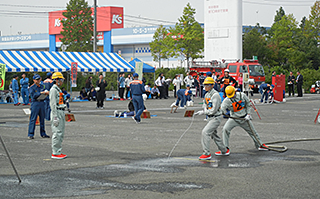
Koriyama Plant
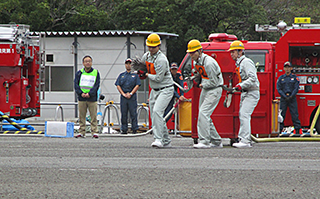
Yokohama Plant
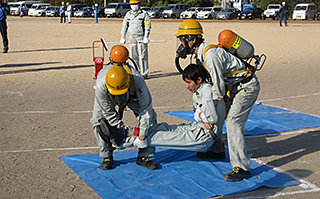
Nanyo Plant
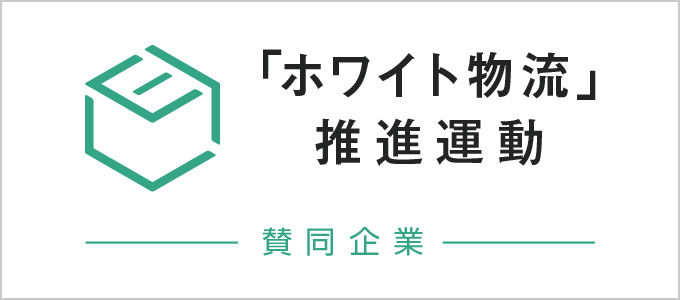
Hodogaya Chemical endorsed the spirit of the White Logistics Promotion Campaign*1 advocated by the Ministry of Land, Infrastructure, Transport and Tourism; the Ministry of Economy, Trade and Industry; and the Ministry of Agriculture, Forestry and Fisheries in January 2021 and submitted a voluntary action declaration to the White Logistics Promotion Campaign Secretariat.
In the voluntary action declaration, we reviewed the aspects of transportation, including greater logistics efficiency and modal shifts, and we listed our efforts to standardize contracts and ensure safety.
We ensure the safety and health of all local residents, including those involved in logistics, and protect the local environment by following the Logistic Safety Management Rules, which stipulates basic items concerning preventing accidents and disasters in logistics related to Group products and other basic items for measures in the case of an accident or disaster. The Group takes safety measures, including the issuance of a Yellow Card*2, which describes measures to take and information on reporting, to transport operators to enable them to respond appropriately in the event of an accident during the transportation of hazardous substances.
Additionally, the Group ensures safety during cargo handling and makes suitable judgments on marine logistics during abnormal weather.
Regarding the distribution of all products, including dangerous goods, chemicals, pharmaceuticals and other general cargo and refrigerated cargo, Hodogaya Logistics Co., ltd. holds transport safety meetings with subcontracted logistics companies, SP (stock point)*3 meetings, and other safety training meetings, and they also engage in safety activities such as sharing SDSs (safety data sheet)*4 and safety-related information and carrying yellow cards.
Moreover, they take global safety measures, such as translating product labels and SDSs into the official language of the export destination as a safety action for the transportation of dangerous goods.
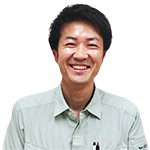
Manufacturing Department,
Koriyama Plant
S.M
We must, above all, keep in mind that errors in production sites can lead to irreversible situations. Precisely because we cannot experience failures, opportunities to imagine and consider through KYT and PYT are important. As a technical staff member, I approach manufacturing department training with a focus on chemical perspectives. I believe that sharing opinions from various viewpoints within each person’s position and role leads to a more multifaceted understanding of potential dangers, enhancing safety awareness and sensitivity, and leading to actions that protect our colleagues.
While no two situations in daily life are exactly the same, such training leads to timely communication and caution in our daily activities. Expanding the circle of safety culture, I want to contribute to stakeholders as a chemical manufacturer with a higher safety awareness, always keeping in mind that “safety is the foundation of production activities.”
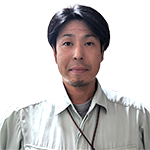
Manufacturing Department, Yokohama Plant
Y.I
In its meetings held monthly at the Yokohama Plant, the Health and Safety Committee deliberates on measures to prevent industrial accidents and health disorders, workplace inspections and advice on health promotion by industrial physicians, risk assessments, and near-miss incidents. The content of the meetings is shared with promoters at each workplace, and workplace health and safety meetings chaired by the promoters are held. During these meetings, we conduct health and safety-related education, discuss near misses and case studies of past incidents, find dangers lurking in the workplace, and notify other people of dangerous areas, all of which helps to raise safety awareness and to prevent occupational accidents. We will continue to work toward building safe and secure work environments and achieving zero accidents and injuries.
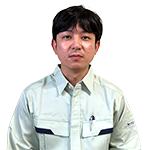
Nanyo Plant
T.K
As part of our efforts to achieve zero accidents and zero occupational injuries, we hold safety and health meetings every month at each workplace. The purpose of the meetings is to share and discuss the agenda, materials (near-miss accidents, examples of past accidents and disasters, etc.), and opinions raised by the Safety and Health Promotion Committee. With regard to nearmiss accidents, we are not only focusing on what we have previously experienced, but also disseminating examples of potentially dangerous near-miss accidents to increase personnel sensitivity to risks. At the meetings, the focus is on in-depth discussions and exchanges of opinions, and by sharing points to be noted when working, we can deepen understanding of the process and allow veteran workers to pass on their skills and knowledge to younger workers. We will continue to build safe and secure workplaces to achieve accident‑free, and disaster‑free operations.

Nanyo Plant
Y.S
In February 2019 I participated in a disaster prevention training session focused on young employees. It was organized by the Shunan Region Security and Disaster Prevention Council, and was attended by almost 100 employees from nearby plants.
In the training session we learned about the correct use of equipment for controlling falls when working high up.
Actually experiencing and physically feeling what it is like to hang using a full harness enabled me to understand in a very immediate way the importance of equipment to protect health and safety, which was a valuable experience.
I was planning to attend again this year, but unfortunately the training session was cancelled due to the impact of COVID-19. I am sure that, if young employees keep on participating in these disaster prevention training sessions, their safety awareness will be enhanced, and everybody at the plant will be able to acquire peace of mind.
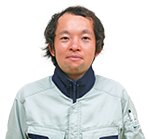
Koriyama Plant
Y.O
A self-defensive firefighting skills competition is held under the motto to “protect our own workplace by ourselves,” and aims to nurture self-defense fire brigades at each business facility who can perform appropriate initial response in the event a disaster occurs.
Last year, 32 corporate teams based in Koriyama participated in the competition and competed to show the results of our regular practice. During the two years I participated, it was very frustrating that our team became runner-up for two years in a row, but through firefighting skills I was able to gain awareness of safety and knowledge on initial response in the event of a disaster.
Safety is an essential norm in a plant, but it is very difficult to maintain this norm. I feel that it is the responsibility of us working at a chemicals manufacturer to have a keen awareness and knowledge on safety at all times, and that safety can be maintained by instilling such awareness and knowledge throughout the plant.

Koriyama Plant
T.O
A self-defensive firefighting skills competition is held under the motto to“ protect our own workplace by ourselves,” and aims to nurture self-defense brigades who can perform appropriate initial response in the event a disaster occurs at a business facility. About 30 corporate teams based in Koriyama participate in the competition. We just worked really hard to show the results of our regular practice. That is why we were literally speechless with joy when we won the Best Performance Award in both the first year and the second year!
What is important is that each one of us act with the awareness to“ put safety first” at all times. If we have the awareness and knowledge, we can look back at our own behavior, and if you have higher awareness, you can call out to the people around you. I think this is the ideal form of safety.